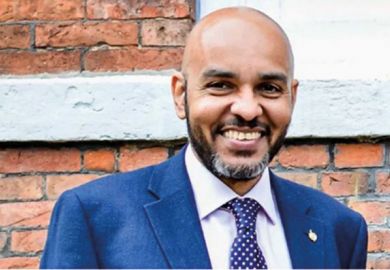Higher education has been in a state of “continual institutional churn” for years, with almost a third of academic institutions undergoing some sort of merger since the mid-1990s.
Those are the findings of Malcolm Tight, professor of higher education at Lancaster University, who has tracked the mergers and acquisitions that occurred in the sector between 1994-95 and 2009-10.
Thirty per cent of the 184 higher education institutions in existence in 1994-95 - 55 in total - had been involved in mergers by 2009-10, with a further 54 changing their names during the 15-year period.
Given the broadly stable environment in the sector between the creation of 42 new universities in 1992 and the introduction of the new fees and funding system in 2012, those in higher education “might expect this…period to exhibit some degree of stability”, Professor Tight says. Instead, there was “considerable external institutional change”.
“Many were involved in mergers with other institutions, changed their names, or both,” Professor Tight writes in a paper, titled “Institutional churn: institutional change in United Kingdom higher education”, published in the latest edition of the Journal of Higher Education Policy and Management.
One, the University of Humberside, now the University of Lincoln, “even moved city, changing its name…in the process of establishing itself in its new location”, he writes.
Several types of merger are identified by Professor Tight. These include the merger of “equals”, such as the link-up between the University of North London and London Guildhall University to form London Metropolitan University; that of different status institutions (for example, the University of Salford and the Salford College of Technology); and the absorption of smaller specialist colleges or schools (most commonly teacher training colleges or medical schools) by larger universities.
All these strategic moves were underpinned by the belief that the “external environment favoured larger institutions with broader and deeper subject coverage”, Professor Tight argues.
While institutions understandably seek to “regularly reinvent themselves…so as to better survive”, the various mergers have fed into a sense of “continual institutional churn” that affect all involved.
“With a few notable exceptions, most mergers involve a large organisation taking over a smaller one, so only a minority of staff are directly affected, but the effects will be significant for them,” Professor Tight told Times Higher Education. “I am aware…of one person from a faith- based college involved in such a merger who was so annoyed and upset by what happened that they changed their religious allegiance.”
And the frequent internal restructuring of departments, faculties and managerial methods perhaps has had a more significant impact on staff than external change, Professor Tight added.
“The more general institutional grind…of regular internal restructuring and continual reviews does, in my view, have a deleterious effect on many staff - academics and non-academics,” he said.
“At one level you get used to it, and…it isn’t confined to higher education, but it does wear you down.”
Register to continue
Why register?
- Registration is free and only takes a moment
- Once registered, you can read 3 articles a month
- Sign up for our newsletter
Subscribe
Or subscribe for unlimited access to:
- Unlimited access to news, views, insights & reviews
- Digital editions
- Digital access to THE’s university and college rankings analysis
Already registered or a current subscriber? Login




